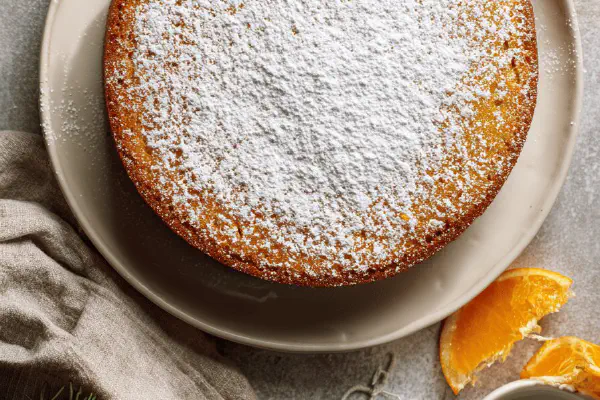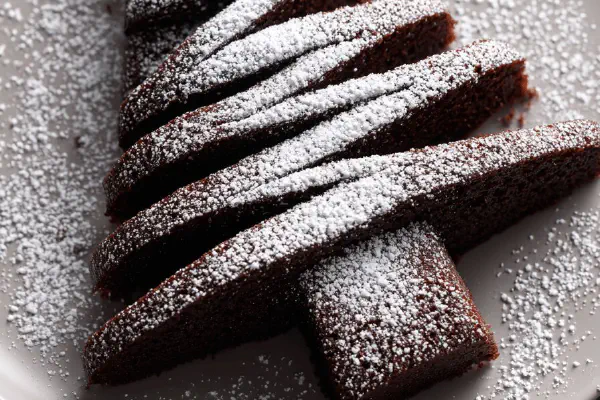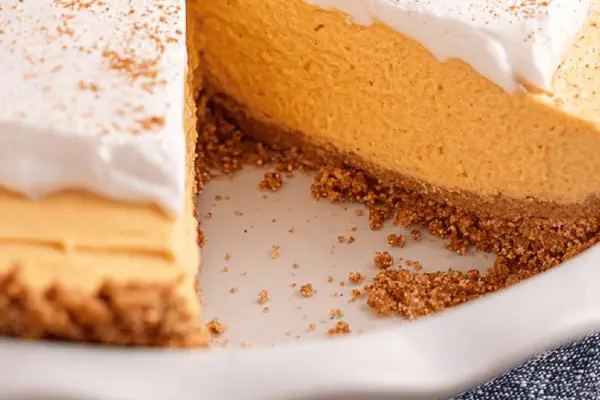New Year Vasilopita Cake

E
By Emma
Certified Culinary Professional
•
Recipe tested & approved
A traditional Greek cake with a twist. Uses spiced flour base adjusted with warm cardamom instead of nutmeg, switched lemon zest for orange zest to brighten flavors. Yogurt replaced by buttermilk for tang and tender crumb. Optional trinket baked inside for luck. Batter balance important; too much liquid spells dense cake. Bakes until golden dome cracks a bit and toothpick comes out clean. Dusting powdered sugar with star stencil finish. Keeps moist 5 days in airtight container room temp. Fork ready for slicing. Perfect for midwinter celebrations or anytime you want a bit of tradition with a citrus punch.
Prep:
40 min
Cook:
55 min
Total:
Servings:
8 servings
#Greek
#New Year
#cardamom
#citrus
#buttermilk
#holiday baking
#traditional cake
Quick citrus punch meets old Greek traditions. The vasilopita, just around New Year’s, hides a lucky charm; fun at the table but tricky to bake right. Yogurt felt plain; swapped for buttermilk adds depth and softness learned from back kitchen experiments. Cardamom over nutmeg brings subtle warmth without clumsy spice notes. Zesting oranges instead of lemons less harsh, blends nicely with sugar and butter. Watch batter consistency—not too runny—tells you when to stop. Practice timing using senses; the hint of fragrance, slight crack on dome, toothpick’s almost-clean poke. Cooling patiently? Non-negotiable. Stencil and dust sugar for festive look; cut eagerly, reveal who gets the good fortune. Keep cake covered; dries fast otherwise. Love the rituals in baking, the tension and the surprises, better with every try.
Ingredients
- 280 g (2 cups) all-purpose flour unbleached
- 2.5 ml (1/2 tsp) baking soda
- 2.5 ml (1/2 tsp) ground cardamom
- 200 ml (3/4 cup plus 1 tbsp) buttermilk
- 2 oranges zested finely
- 25 ml (1 2/3 tbsp) fresh orange juice
- 100 g (7 tbsp) unsalted butter softened
- 270 g (1 1/3 cup) granulated sugar
- 2 large eggs
- small ceramic trinket or coin wrapped in foil (optional)
- powdered sugar for dusting
About the ingredients
Flour changes moisture levels; measure accurately. Cardamom instead of nutmeg is not typical but sparks interesting notes. Buttermilk adds tang and tender crumb, makes cake less dense—a worthwhile substitution. Butter soft, not melted; helps cream with sugar for lighter texture. Eggs room temp blend easier. Citrus zest rules flavor; fresh zest crucial or aromas dull. Orange juice replaces lemon juice for gentle sweetness, minimizes acidity without flattening flavors. Optional trinket adds fun; wrap well or small ceramic item suits. Powdered sugar dusting is traditional finish; stencil optional but adds visual charm. If allergic to nuts or dairy intolerant, substitute butter with coconut oil; texture shifts with caution but doable. Adjust flour or liquid to keep batter thick but spoonable. Consistency tells more than grams often.
Method
- Get the oven rack set in the middle slot, preheat oven to 175 °C (350 °F). Butter an 8-inch springform pan, line the bottom with parchment; prevents sticking and saves pan drama.
- Whisk flour, baking soda, and cardamom in a bowl. Cardamom swaps nutmeg for a warmer, slightly floral punch—trust me, no regrets.
- In a separate bowl, combine buttermilk, orange zest, and juice. Buttermilk gives tenderness, acidity wakes up the batter, saves from heaviness.
- Beat butter with sugar until fluffy using electric mixer; pale and light means air bubbles folded in—key texture player.
- Add eggs one by one; incorporate well but don’t overbeat or risk tight crumb. Too much whipping beats out the air.
- Mix in dry ingredients alternating with buttermilk-juice mix, starting and ending with dry. Fold gently, no need to beat. Feel the batter thick, creamy but scoopable. Too wet or dry? Adjust with a splash of buttermilk or tablespoon flour silently.
- Pour batter into pan. Gently press the foil-wrapped trinket deep in near center—not too deep or it disappears; not shallow or easy to spot. Tradition calls for luck; I call it suspense.
- Bake 52–57 min; watch for golden top dome developing cracks and toothpick comes out with few crumbs, not wet batter. Oven temps vary, smell of citrus and warming spices is a clue to start peeking.
- Cool on wire rack completely, about 2 1/2 to 3 hours. Resist urge to unmold warm or cracking welcomes disappointment.
- Once cold, run a knife around edges, pop springform open, lift the cake. Dust powdered sugar through star-shaped stencil or simple sifted layer. Clean edges by gently lifting stencil straight up. Presentation counts.
- Store cake covered at room temp up to 5 days; moist but crumb stays firm. If you missed the trinket in your slice, better luck next year or embrace the surprise bite.
- Trouble shooting: dense or gummy means mix was too wet; flour adjustment needed. Burnt edges noisier ovens? Lower rack or tent with foil halfway.
- For savory variant, swap orange for lemon zest plus a splash of limoncello; changes aroma dramatically. I tried both, orange wins for brightness, but lemon pleases the sour fans.
- No buttermilk? Milk plus a tbsp vinegar curdles enough. No mixer? Cream butter and sugar long with wooden spoon or fork, muscle can offset absence of tech.
- Parchment helps avoid ugly stuck bottoms but if none, grease and dust with flour well. My early efforts taught me that the hard way.
- The essence: watch texture not time. Smell citrus, see golden crackle, toothpick dance, and cool fully—patience, the baker’s virtue.
Cooking tips
Start by prepping pan fully; lining prevents sticking surprises. Dry ingredients whisked first distribute leaveners evenly; no lumps means even rise. Butter sugar creaming traps air—don’t skimp on this step or cake deflates inside. Eggs add moisture and bind but monitor mixing time; overbeating yields tough crumb. Alternate folding dry and wet prevents gluten overdevelopment; gentle folding preserves lightness. Insert lucky charm carefully; place same spot every time for consistency. Bake till dome golden with small cracks, smells citrus and warming spice—indicative cues over timer. Toothpick test final step; crumb sticks differently than batter. Cooling must be thorough to set crumb and make unmolding clean. Dust sugar through stencil sparks joy; practice stencil removal straight up to avoid smudging. Store airtight; keep moisture locked and flavor intact. Adjust oven rack lower if edges brown quickly. Use toothpick and smell more than timer alone; senses guide better than clock.
Chef's notes
- 💡 Mix dry ingredients first—flour, baking soda, cardamom. Prevent lumps, uneven rise. Cardamom replaces nutmeg; milder spice aroma, warm but not crushing. Use fresh orange zest; oils volatile, dull quickly.
- 💡 Cream butter and sugar thoroughly; pale, fluffy texture signals trapped air. Air bubbles mean lighter crumb. Eggs room temp, add one by one to keep emulsion. Overbeating breaks air, makes dense crumb.
- 💡 Fold dry and wet mixes in alternation, start and end dry. Gentle folds preserve batter thickness and fluffiness. Batter should be scoopable, creamy but not runny. Adjust softness with small flour or buttermilk tweaks silently.
- 💡 Wrap small ceramic trinket tightly in foil; place near center but not bottom. Too deep hides charm, too shallow spoils surprise. Tradition meets suspense here. Careful pouring, gentle placement avoid disrupting batter texture.
- 💡 Bake at 175 °C mid-oven rack. Watch top dome for slight cracks, smell citrus and cardamom warming. Toothpick emerges with few crumbs, no wet streaks. Cool fully on wire rack; warm cake traps steam, risks collapse.
Common questions
How to tell cake done without timer?
Look for cracked golden dome. Smell warming spices and citrus. Toothpick test last call. Crumbs cling but no wet batter. Senses guide better.
What if no buttermilk?
Use milk plus tbsp vinegar or lemon juice. Let sit 5 min. Acidity tenderizes gluten—critical. Avoid straight milk; won’t give same crumb texture or tang.
Cake too dense or gummy?
Mix probably overwet. Adjust flour next bake. Batter should be thick but pliable. Too wet, gluten weakens, batter sinks. Could try ground almonds as alternative thickener.
How best to store?
Airtight container room temp. Avoid fridge, dries cake fast. Moist crumb stays up to 5 days. Wrap well if sliced. No freezer recommendation; crumb might degrade.



